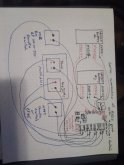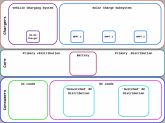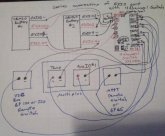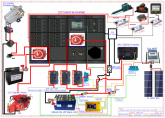I could be wrong, but....This whole concept has blown my mind!!!
What I can't quite get my head around is the unregulated voltage to the expensive LifePo4 cells
5.55 / 4 = 1.3875V additional voltage per cell which is a 38% possible increase in charge voltage!!!!!
I get that the stated Vm is unlikely but what damage is possible. How is the SBMS0 protecting my cells against this, is it just by cutting the power via the DSSR20 when voltage is above a specification set in the parameters.
The LiFePo4 cells have near zero resistance, this means that they are basically determining the voltage not the panel. Sure, the panel has an open circuit voltage that is too high and Vm is too high too, but the batteries drag that down to their 14.4v (don't quote that value, don't use that value).
The fact that the panel is not at Vm, means the panel is not delivering maximum power that it could. If the batteries would leave the voltage at 19.95v, then the watts would be maxed. This is why I believe Dacien recommends finding 30 cell, for 12v, or 60 cell for 24v panels. They will have a Vm closer to the batteries.
The MPPT sets the voltage from the cells to Vm and delivers the right voltage to the batteries, thus the MPPT is a DC/DC converter that requires a bunch of expensive parts.
The SBMS0 cuts off the panels when the voltage climbs above the 14.4 (or whatever, again don't quote me) because that indicates the batteries are getting full. (Or it can watch the state of charge and cut off at your favorite % if you like).












